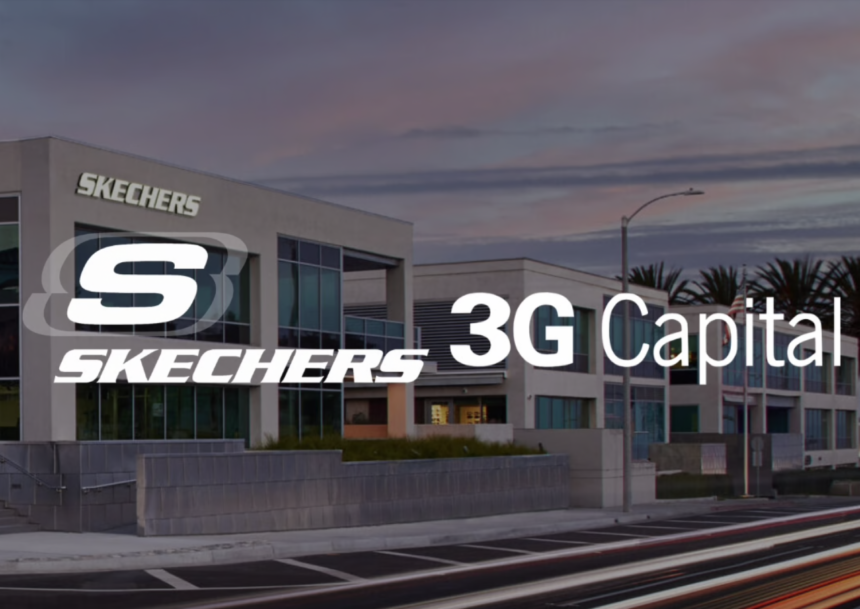The latest acquisition news is that 3G Capital is buying Skechers, the footwear brand. Reuters indicates that the deal stands at $9.42 billion. Although a considerable sum of money, this acquisition/sale would not be an interesting brand story if it were not for the buyer: 3G Capital.
3G Capital’s history with brands has been, well, sketchy. 3G Capital owns powerful brand businesses such as Kraft Heinz (Oscar Mayer, Heinz ketchup, Kraft American Singles), AB InBev (Anheuser Busch and other beverage brands), and Restaurant Brands International (Burger King, Popeye’s, Tim Horton’s).
This article is part of Branding Strategy Insider’s newsletter. You can sign up here to get thought pieces like this sent to your inbox.
However, 3G Capital is also known for its extreme cost-cutting. This approach – zero-based budgeting – nearly decimated the Kraft Heinz portfolio. There is nothing wrong with efficiency. Every brand and business must strive to be the most efficient and effective. But a basic business principle is that you cannot cost-cut your way to enduring profitable growth. At some point, there is nothing left to cut. And, if there is a crisis, such as a pandemic, you have no capital allocated to keeping your brands afloat. You have not invested in your brands. Customers begin to see no difference between your brands and store brands.
3G Capital was once the darling of Wall Street. Investor luminaries such as Warren Buffett praised 3G Capital for its promises of unending profitable growth. But in 2019, the wall came tumbling down as 3G Capital failed to deliver against the lofty promises of wealth beyond the dreams of avarice. 3G Capital took an extraordinary $15.4 billion write-down on assets in 2019. All of a sudden, 3G Capital offered statements of support for innovation and brand building when previously, 3G Capital’s love affair was with cost-cutting and deals.
Massive 3G Capital cost-cutting with little brand investment left Kraft Heinz brands vulnerable to, and out of touch with, consumers’ changing habits and tastes. In 2019, things were so bad that there was even talk of Kraft Heinz needing to sell some brands. Although 3G Capital owners support their zero-budgeting approach as a way to generate brand profitability, an extreme focus on cost-cutting over investing in sustainable revenue growth damages brand health. Damaged brand health means less shareholder value.
Brands need nurturing, not neutering.
Which brings us to Skechers. How will the Skechers brand stay Skechers under 3G Capital management? Will there be another case study of weakened brands? Or will the lessons learned in 2019 make 3G Capital a more intensely brand-focused team?
Skechers is a veritable success story in an extremely cutthroat category, including sports shoes such as Nike, Adidas, New Balance, and casual footwear such as Allbirds, Vans, Cole Haan, Rockport, and Crocs. According to The Wall Street Journal, “Skechers thrives on retirees looking for comfortable kicks and families looking for something more affordable for their children.” Skechers pull-on shoes are an example. Youthful and useful. Skechers also offers sneakers in unique styles and colors.
A family-owned business, Greenberg’s Skechers began in 1992. According to Reuters, at the time, Skechers sold “men’s street style” shoes. The iconic shoe was the Chrome Dome. As the Skechers brand evolved, the focus became easy-to-wear, affordable, stylish comfort. Most Skechers shoes sell for $75 to $150. It helps to have trend-setting, “with-it” and appealing, physically fit celebrity spokespeople.
Currently, Skechers faces the reality of tariffs and higher costs in the current economic environment. So, for the family, a sale makes sense. For the brand, there are potential serious caveats. Skechers has a huge global footprint with 5,000 stores in 120 countries. This can be good news or bad news in the uncertain global environment.
Putting the salivating Wall Street contingent aside for a moment, Skechers is a winning brand in a category filled with fickle, style-chasing, celebrity-endorsed footwear. Skechers has a brand promise, which it delivers.
The Skechers-3G Capital acquisition announcement is important because brands are valuable assets. Brands must be treated as valuable assets because brands add or detract financially from your balance sheet. Many times, Wall Street forgets just how valuable an asset a brand can be for an enterprise. Shareholder rewards become the goal. Valuable brands are sometimes milked for every single penny. Wall Street forgets about brand equity and sees the dollar signs of shareholder maximization. But, there is no shareholder value without brand value. Something else Wall Street tends to forget.
Over thirty years ago, Allen Sheppard, CEO of Grand Metropolitan, a large British conglomerate in hotels and casinos, changed the way businesses viewed brands. CEO Sheppard sold Grand Met’s casinos and hotels. Then, Sheppard bought American brands, Pillsbury Foods and Pillsbury’s subsidiary, Burger King. Mr. Sheppard believed that Pillsbury and Burger King would complement Grand Met’s network of European pubs and restaurants. Grand Met owned an extensive beverage portfolio consisting of J&B Scotch, Bailey’s Irish Cream, Smirnoff Vodka, and Inglenook and Almaden wines. (Grand Met also owned Alpo Pet Foods – now owned by Nestlé – and Pearle Vision Centers – now owned by Luxottica.)
CEO Sheppard viewed strong brands as financial assets. Mr. Sheppard believed that brand-associated Goodwill was a corporate asset that made an organization more valuable. So, Allan Sheppard included the brand-associated Goodwill of Pillsbury and Burger King on Grand Met’s balance sheet. Grand Met also included brand value in its financial reports.
Goodwill is an intangible asset recognized when an enterprise purchases a brand as an operating business. It reflects the premium that the buyer paid for the brand in addition to the net value of its other assets. With this accounting maneuver, brand equity came into being. Brand equity is the customer’s perception of the brand’s financial worth.
At the time, this accounting generated much discussion about whether brands are assets whose financial value can be measured.
The disagreements between marketers and CPAs were fierce. Just how should brand value be reflected in financial reports? If brands are assets, should expenditures to help build brand value be viewed as operating expenses or capital investments? Should the value of brands be carried on the balance sheet? Should we depreciate the value of brands over time? Whatever the accounting debate, in the M&A world, one thing is clear and consistent: Strong brands were viewed as valuable business assets.
As a historical note, after the birth of brand equity, the ARF, Advertising Research Foundation, spent several years providing support for brand equity research and platforms for seminars on brand equity. In conjunction with the research heads of the major advertising agencies, the ARF created a committee called the Coalition for Brand Equity. This Coalition for Brand Equity delivered a ground-breaking report on the importance and implications for brand advertising and brand business operations.
However you feel about brand, here is a truth: businesses are bought because they have strong brands. Strong brands are valuable. Strong brands create shareholder value. Skechers is a strong, valuable brand.
But with the financial finagling that comes from Wall Street’s “show-me-the-money” embrace, brand acquirers tend to focus on slashing costs rather than investing in making their brands even more valuable.
No one can predict the future. So, the fate of the Skechers brand is up in the air, regardless of whether or not the Greenberg family still holds the C-suite titles. Let’s hope that 3G Capital will take care to build and grow Skechers to enduring, profitable growth.
Wall Street can play a role. However, it should not focus on enabling the machinations of moneyed moguls who do not care about building brand value. Instead, Wall Street and businesses in general must focus on building bigger, better, stronger brands as a foundation for enduring profitable growth.
Wall Street needs to abandon its quick-return infatuation. Brands are long-term. Brand management is ongoing. Brands are valuable assets. This is an economic reality. Wall Street and investors must embrace foundational concepts such as building brand value and proper brand management.
Factories become outmoded. Machinery needs to be replaced. Processes need to be transformed. Technology needs to be updated. Renovation and innovation are the lifeblood of a sustainable enterprise. If properly managed, brands can live forever. Valuable brands generate enduring, profitable growth.
Contributed to Branding Strategy Insider by: Joan Kiddon, Partner, The Blake Project, Author of The Paradox Planet: Creating Brand Experiences For The Age Of I
At The Blake Project, we help clients worldwide, in all stages of development, define and articulate what makes them competitive at pivotal moments of change. This includes pricing strategies that propel their businesses and brands forward. Please email us to learn how we can help you compete differently.
Branding Strategy Insider is a service of The Blake Project: A strategic brand consultancy specializing in Brand Research, Brand Strategy, Brand Growth, and Brand Education
Post Views: 34










